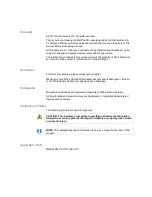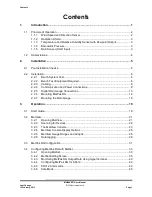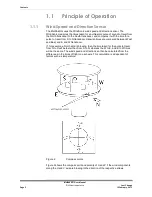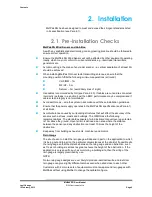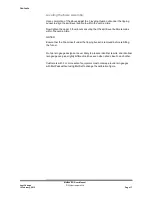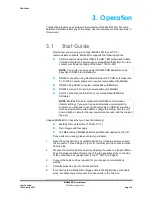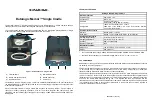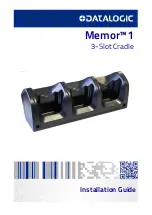
Contents
MetPak RG User Manual
Last Change
©
Gill Instruments Ltd
12 February, 2013
Page 5
2.
Installation
MetPak RG has been designed to meet and exceed the stringent standards listed
in its specification (see Para 6.1).
2.1
Pre-Installation Checks
MetPak RG Wind Sensor and Hub Box.
As with any sophisticated electronics, good engineering practice should be followed to
ensure correct operation:
Ensure the MetPak RG Wind Sensor will not be affected by other equipment operating
locally, which may not conform to current standards, e.g. radio/radar transmitters,
generators etc.
Avoid mounting in the plane of any radar scanner – a vertical separation of at least 2m
should be achieved.
When installing MetPak RG near radio transmitting antennas, ensure that the
mounting position fulfills the following minimum separations (all round):
VHF IMM – 1m
MF/HF – 5m
Satcom – 5m (avoid likely lines of sight)
Use cables recommended by Gill (see Para 2.2.3). If cables are cut and re-connected
incorrectly (perhaps in a junction box) then EMC performance may be compromised if
cable screen integrity is not maintained.
Avoid earth loops – wire the system in accordance with these installation guidelines.
Ensure that the power supply operates to the MetPak RG specification (see Para 6.1)
at all times.
Avoid turbulence caused by surrounding structures that will affect the accuracy of the
sensors such as trees, masts and buildings. The WMO make the following
recommendations. The standard exposure of wind instruments over level open terrain
is 10m above the ground. Open terrain is defined as an area where the distance
between the sensor and any obstruction is at least 10 times the height of the
obstruction.
Keep away from building exhaust vents, machinery and motors.
Rain Gauge
The site chosen to install the rain gauge will depend in part on the application to which
it is being put and in part on the particular circumstances at the site. But if possible site
the rain gauge so that the distance between the rain gauge and an obstruction, such
as Trees or buildings is at least as great as twice the height of the obstruction. If the
application is very specific, such as monitoring a building site, then the siting of the
rain gauge is largely prescribed by use.
NOTE:
No two rain gauge designs are ever likely to produce identical results, and identical
rain gauge can give slightly different catches even when sited close to each other.
Customers with 2 or more sets of equipment must not swap around rain gauges with
MetPaks without using MetSet to change the calibration figure.


